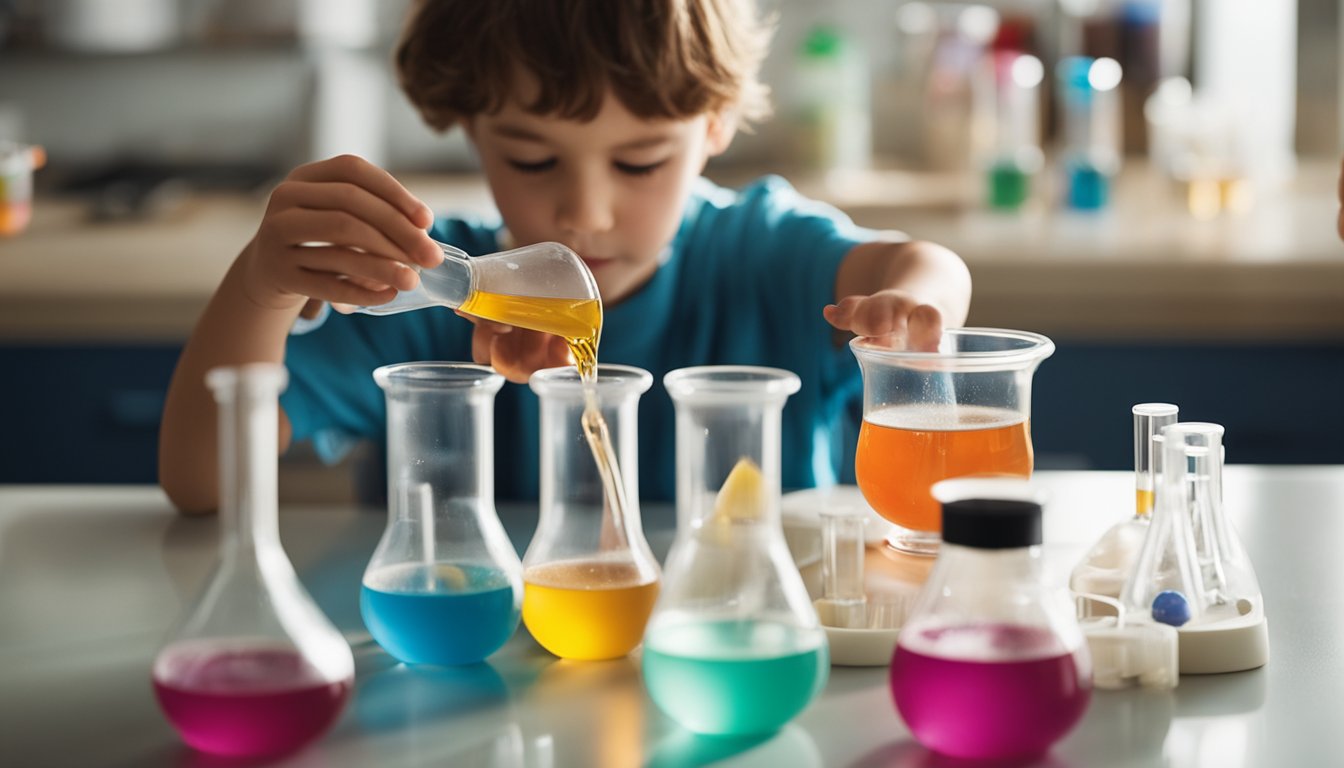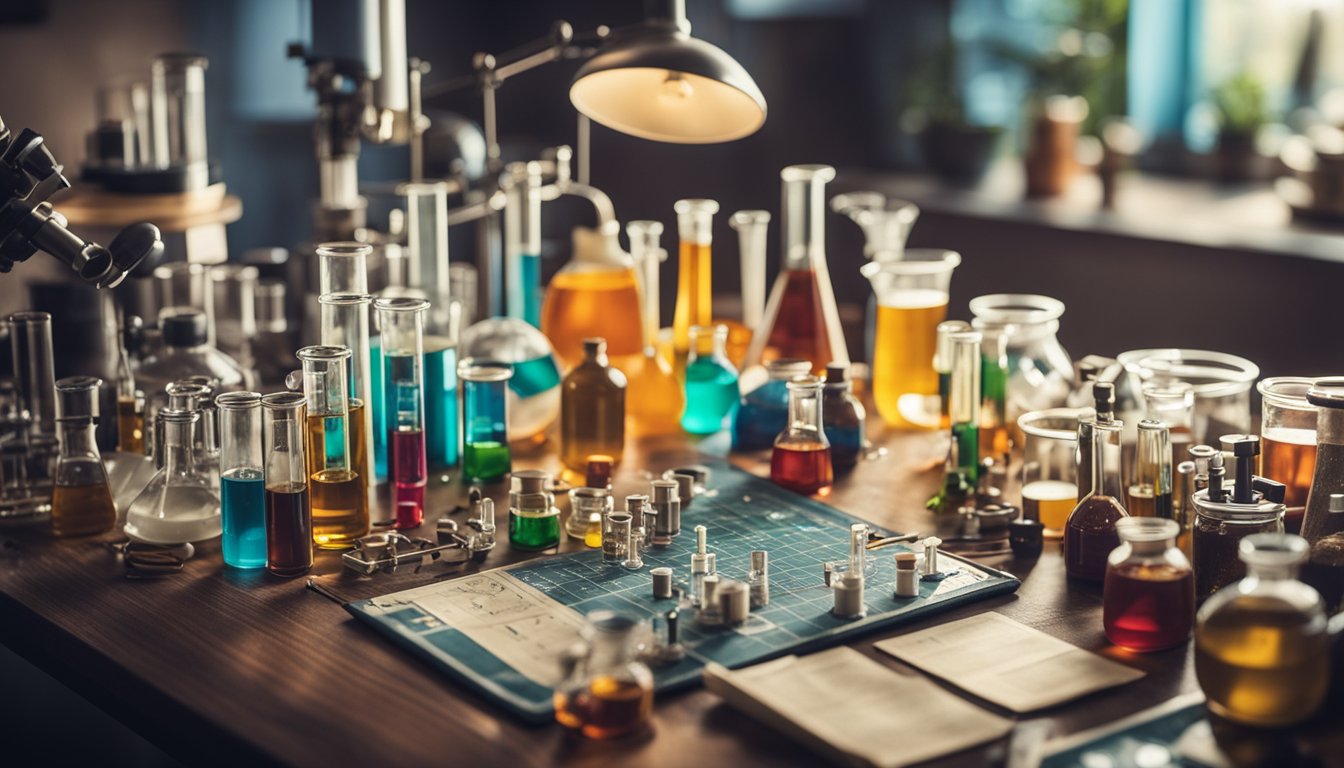Late updated: 10 Apr 2025 08:04
Written by:
Encouraging Creativity With Home Science Projects: Cultivating Young Innovators
Science projects at home offer far more than just a way to keep children busy. They provide a unique opportunity to cultivate creativity and curiosity, essential building blocks for problem-solving and self-esteem. By turning our homes into mini-laboratories, we empower children and ourselves to explore scientific concepts in a hands-on way, fostering both education and inspiration.

Our environment is filled with everyday materials that can spark innovative experiments. Whether we are transforming kitchen ingredients into chemistry projects or using household items to create engineering challenges, these activities promote a deeper appreciation for the world around us. As we engage with these projects, we are not just building knowledge; we are fostering a culture of creativity and critical thinking.
The simplicity of finding most materials at home ensures that anyone can partake, regardless of age or experience. Our goal is to deliver clear, step-by-step instructions that make these projects accessible and enjoyable. Together, let's dive into the fascinating world of home science and watch creativity thrive.
Key Takeaways
- Home science projects nurture creativity and problem-solving.
- Everyday items can facilitate engaging and educational experiments.
- Clear, step-by-step guidance makes projects accessible to all ages.
Setting Up Your Home Laboratory

Creating a home science lab opens doors to exciting explorations and creativity for all ages. A well-organised space with the right tools ensures safe and efficient experimentation.
Selecting the Right Space
Choosing a suitable area is the first step. Opt for a place with good ventilation—such as a garage, basement, or spare room—ensuring it can handle potential spills or other mishaps. Adequate lighting is vital for conducting precise work.
We should ensure ample countertop or table space to spread out materials. It’s useful to have nearby shelving or storage for easy access to books, tools, and supplies. Stability is crucial, so the surface should be steady to minimise risk during experiments.
Keep in mind the importance of proximity to essentials like water sources for cleaning and emergency devices, such as fire extinguishers.
Essential Tools and Materials
A basic science lab requires fundamental equipment to get started. Beakers, test tubes, pipettes, and measuring cylinders form the core. For measurement accuracy, include a scale and a thermometer. Safety goggles and gloves are a must to protect against spills and splashes.
Incorporate diverse materials like food colouring to experiment with colour mixing, or substances that produce foam, to teach about chemical reactions. Books on science experiments offer guidance and inspiration, so having a selection on hand is beneficial.
Simple storage solutions, such as labelled containers and a labelling system, help keep tools organised and within reach during projects.
Safety Guidelines and Precautions
Prioritising safety is essential in any home laboratory. Normally, we should start with clear labelling of all substances to prevent confusion and mishandling. Safety goggles and gloves are compulsory during experiments to avert potential injuries.
Establish an area away from common living spaces to limit exposure to fumes or splashes. Emergency protocols, including the location of fire extinguishers and first aid kits, should be well communicated to everyone using the lab.
Regularly review and update safety practices. Teach young scientists the importance of handling equipment responsibly, reinforcing safe habits.
Exciting Project Ideas for All Ages
Exploring hands-on science projects can ignite curiosity across all age groups. From building simple structures to conducting captivating experiments, each age group benefits from activities tailored to their developmental stage. Let's explore some of these engaging projects.
Early Years STEM Activities
For our youngest learners, simple yet captivating activities can make science exciting. Baking soda and vinegar reactions are an excellent start. This classic experiment fascinates children as they watch the fizzing and bubbling reaction unfold, connecting them to basic chemical principles.
DIY musical instruments offer another avenue for exploration. Crafting shakers or simple string instruments allows little ones to explore sound and vibration creatively. Additionally, constructing paper airplanes not only entertains but also introduces fundamental concepts of aerodynamics.
Primary School Science Projects
Primary school children can tackle more complex concepts while still having fun. Designing and creating models of constellations using cardboard and small lights can blend art and science seamlessly, helping children learn about astronomy.
Experimenting with simple circuit projects using basic components such as batteries, wires, and bulbs not only fits neatly into the science curriculum but also stimulates problem-solving skills. Also, constructing a paper tower with newspaper and tape challenges their engineering abilities while fostering creativity.
Secondary School Experiments and Challenges
In secondary school, students are ready for projects that delve deeper into scientific principles. Building a solar-powered car incorporates principles of physics, engineering, and environmental science, providing a multifaceted learning experience.
Investigating the chemical properties behind diverse substances, perhaps through an acid-base experiment involving household items like baking soda and lemon juice, can deepen their understanding of chemistry.
Finally, tackling challenges like devising a model bridge from everyday materials encourages critical thinking and innovation, pushing students to apply what they've learned effectively.
Frequently Asked Questions

Engaging children in home science projects fosters creativity and enhances their knowledge. Simple experiments, safety precautions, and proper materials can turn any home into a lab of discovery. Let's explore how to make learning science a fun and enriching experience.
What are some simple science experiments suitable for young children at home?
Young children can try experiments like making a baking soda and vinegar volcano, growing crystals, or creating simple circuits using LED lights and batteries. Each project is engaging and easy to follow with minimal supervision.
How can you ensure safety while conducting science projects with children?
Safety is paramount. We should always supervise children closely and use age-appropriate materials. It's crucial to wear protective gear such as goggles and gloves when necessary. Clear, straightforward instructions and a tidy workspace also help in mitigating risks.
What materials are needed for easy and educational science experiments at home?
Common household items like baking soda, vinegar, food colouring, and kitchen scales are often needed. Tools like magnifying glasses and measuring cups can further aid in the process. Investing in a basic science kit could expand the possibilities significantly.
How can science experiments at home complement school-based learning?
Home experiments provide practical applications to concepts learned in school. They nurture an in-depth grasp by connecting theory with hands-on activity, reinforcing topics like chemical reactions, electricity, and biology in an enjoyable manner.
What are creative ways to engage elementary students in science through home projects?
We can stimulate interest by incorporating stories or challenges into experiments. Setting up an experiment as an adventure or mission can be motivating. Encouraging students to ask questions and explore variations increases curiosity and engagement.
How can parents and educators assess the learning outcomes of home science projects?
Assessment can include discussions about what was observed and learned. Keeping a science journal to record hypotheses, procedures, and results helps track progress. Utilising open-ended questions allows children to reflect on their learning experience.
